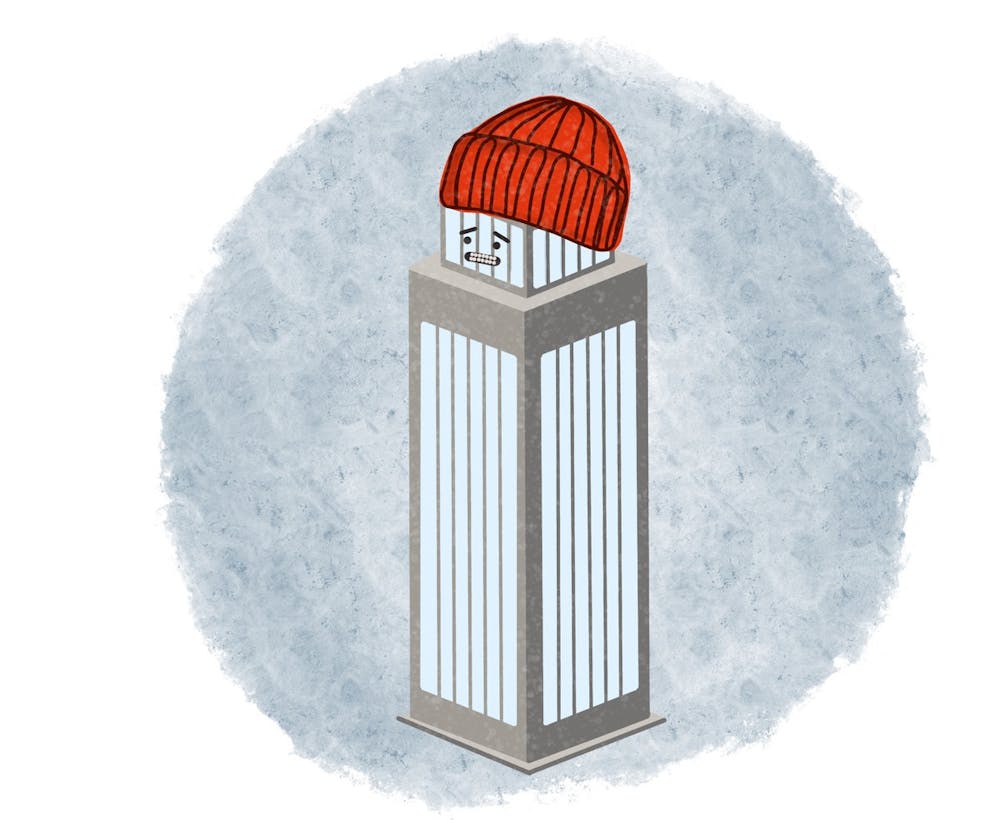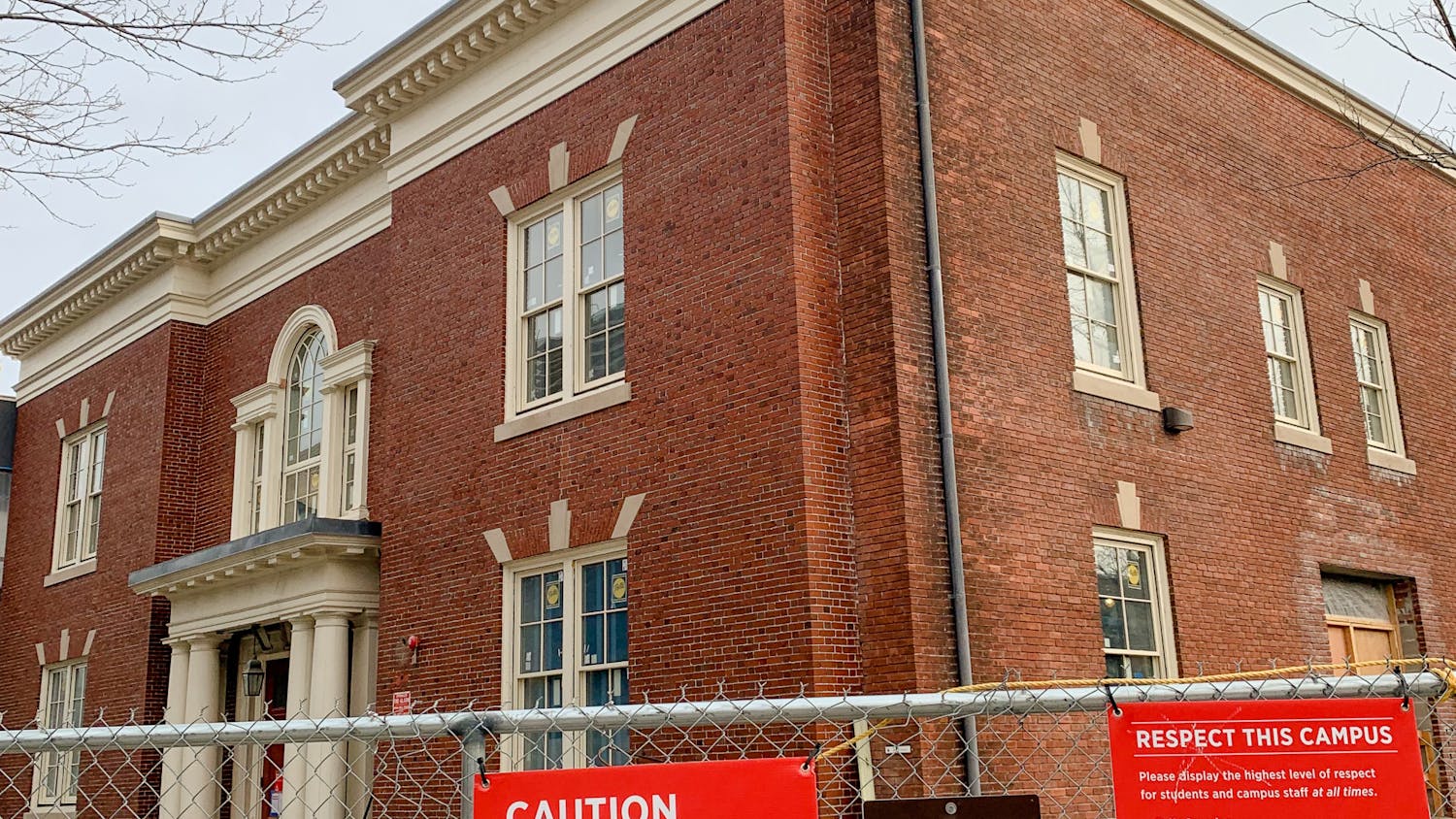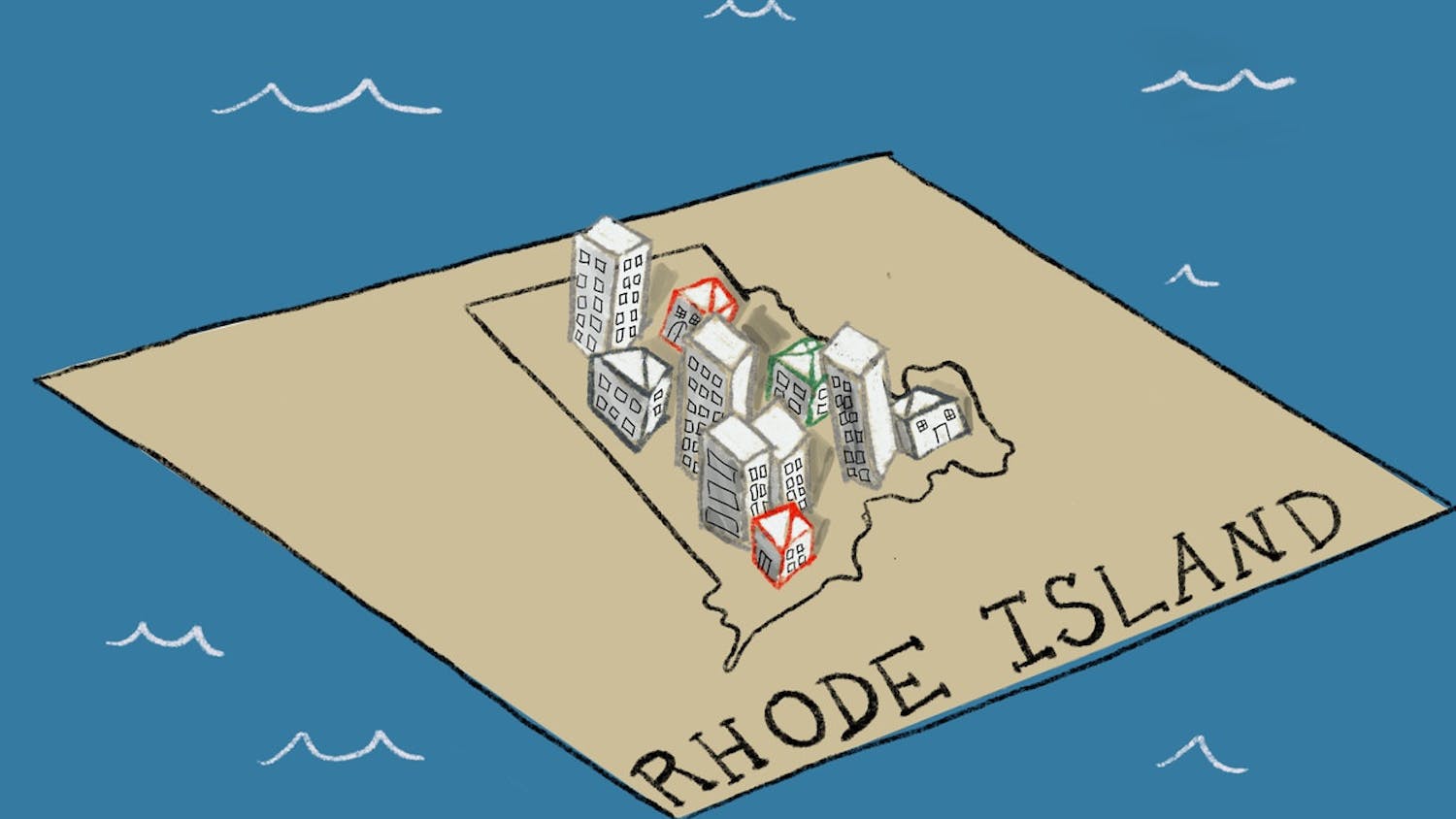Over the weekend, Vivian Li ’25 moved into her neighbor’s room in Caswell Hall to quarantine after testing positive for COVID-19. But the heating in the room had broken during the week, Li said, making it extremely cold as temperatures dropped across the Northeast last Friday.
Li and her neighbor called Facilities Management three times on Saturday to have the heating fixed. Each time, Facilities told Li and her neighbor that they could not find the work order they had previously placed and that they were “really busy” handling “a long queue” of work orders.
“Because the Caswell windows are kind of leaky … our room got really cold and we both had to layer up really dramatically,” Li said.
According to Michael Guglielmo Jr., vice president for Facilities Management, “Facilities Management prioritizes response based on risk to buildings, structures, research and personal comfort.” Throughout the weekend, Facilities received 64 service requests to check temperatures in student rooms and placed work orders into a queue for service — although he said that Facilities did not receive any “repetitive calls.”
At around 2 a.m. Sunday morning, Facilities delivered two space heaters to Li’s room — but five minutes after plugging them in, a power surge caused the electricity in the room to go out, Li said. Li and her neighbor bundled up for the night, and by midday Sunday, Facilities returned to fix the electricity and the heating.
Caswell was not the only building impacted by the cold weather. Residential, academic and athletic buildings at the University encountered a variety of maintenance and infrastructure issues as a result of the near- or sub-zero temperatures last weekend.
Sirens and fire alarms could be heard across campus as Facilities Management and the Providence Fire Department evacuated multiple buildings and repaired damages across campus.
Facilities had prepared for the extreme weather conditions, according to Guglielmo. Those preparations included scheduling additional staff, making rounds in unoccupied campus buildings, placing contractors on “standby” and making adjustments to campus mechanical systems.
Facilities issues included burst pipes, broken sprinkler heads and multiple problems in the Biomedical Center. According to Guglielmo, “remediation efforts are currently underway.”
The Herald spoke to four students impacted by the issues last weekend, including Li, who expressed a mix of frustration and understanding.
Students in Minden Hall also reported losing heat over the weekend, voicing their concerns over building temperatures in building-wide group chat messages reviewed by The Herald. And at New Pembroke 4, a sprinkler head failed in a custodial closet Sunday, Guglielmo wrote.
Facilities shut off the water in the building for four hours, wrote Angelica Mroczek ’25, a community coordinator for New Pembroke 4, in an email to The Herald. During that time, residents were directed to use bathrooms in adjacent buildings.
“Residents were frustrated but understanding of the situation,” Mroczek wrote.
On Friday night, a section of railing was reported as hanging from the roof of Hegeman Hall, Guglielmo wrote, which Facilities inspected following the incident. The Department of Public Safety closed off a portion of George Street and surrounding walkways, and posted a patrol car on the corner of Thayer Street due to concerns about more fencing falling “during the high winds,” wrote Lori Sill, Hegeman’s area coordinator, in an email to residents.
Issues in academic, athletic buildings
Facilities received multiple reports of issues in the Biomed Center and the Sidney Frank Center for Life Sciences between last Friday and Sunday, including flooding in the Biomed Center’s elevators, offices, labs and the Herbarium, according to Guglielmo.
Issues across the two buildings included a frozen coil in one air handler unit that leaked water into the elevator pit and activated the fire alarm, the glycol loop heat exchanger leaking, a frozen pipe on the third floor, a frozen sprinkler head on the second floor and broken sprinkler heads on the third and sixth-floor stairwells, according to Guglielmo.
A restoration plan for physical damages to the buildings “has been developed” and will begin shortly, Guglielmo wrote, while “all systems are (now) fully operational.”
An exterior heating line froze on the second floor of the GeoChemistry Building Saturday morning, resulting in water in parts of the second floor and the spaces below, according to Guglielmo. There was “no impact to labs in this area,” and the issue is currently being addressed, he added.
A pipe also ruptured in the Olney-Margolies Athletic Center Sunday, which damaged multiple walls and carpets, Guglielmo wrote.
Facilities also responded to a sprinkler head failure in Sayles Hall on Sunday that leaked water into three rooms, according to Guglielmo.
Praises Amponsah ’24 was conducting interviews for the Brown Consulting Club in Sayles Room 205 — one of the impacted rooms — when she noticed the ceiling was dripping.
“It’s just unfortunate that a school like Brown, with as big of an endowment as it has, still can’t fix some of the infrastructure,” Amponsah said. “The Northeast is a very cold place … the fact that some of these buildings aren’t equipped to handle that is unfortunate.”
University Spokesperson Brian Clark wrote in an email to The Herald that no University or property owner “can guarantee with certainty that extreme weather events will never result in a burst pipe or heating system malfunction.”
“Brown invests many millions of dollars annually in renewing hundreds of buildings across campus — a number of which date back centuries — through both major renovations and more routine upgrades to infrastructure and facilities,” he added.
From freezing to 50s
While the buildings and heating systems in the Northeast are designed to operate in cold temperatures, they are not meant to sustain the less frequent severe temperatures such as those from last weekend, said Kurt Teichert, senior lecturer in Environment and Society.
“In extreme conditions like that, there’s going to be frozen pipes,” Teichert said, especially in the older buildings on campus which have been retrofitted over the years to include heating and cooling systems.
According to Kim Cobb, director of the Institute at Brown for Environment and Society and a professor of Earth, Environmental and Planetary studies, the record-shattering cold temperatures resulted from a “pile up” of conditions.
This included two opposite “spinning” systems of large-scale atmospheric circulation that pulled colder, northern air masses to the Northeast, in addition to a southern meandering of the polar vortex, a region of constantly spinning cold air around the Earth’s poles.
Still, the University should also be preparing for the more common impact of climate change, Cobb said — record high temperatures that will create “increased cooling demands.”
Haley Sandlow is a contributing editor covering science and research. She is a junior from Chicago, Illinois studying English and French.

Sam Levine is a University News editor from Brooklyn, New York covering on-campus activism. He is a senior concentrating in International and Public Affairs.





